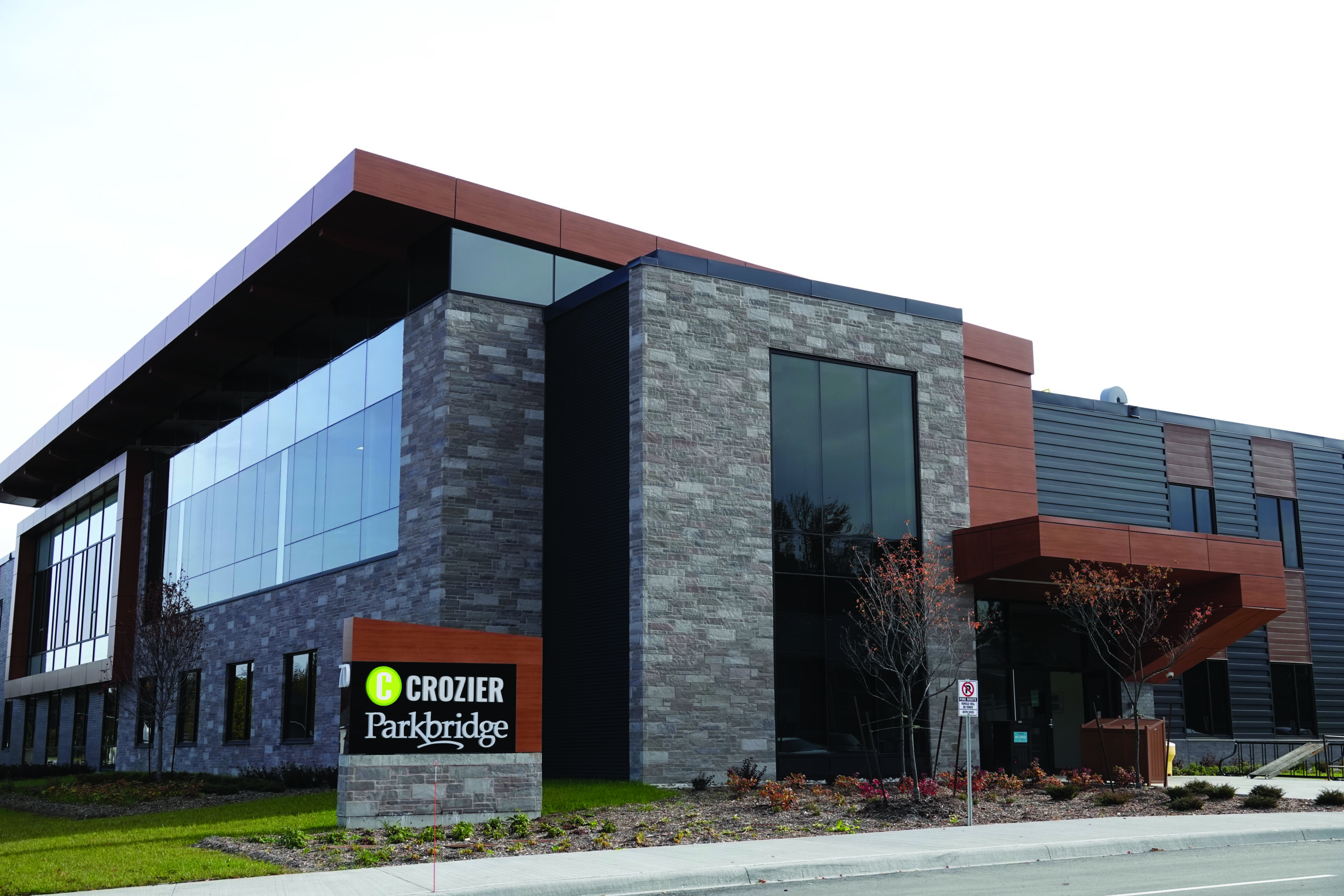Case Study
Success Story: Crozier & Associates Inc.


The Rhythm of Engineering
There is a certain music in engineering. Not measured in notes, but in the rhythm of process: workflows aligned, approvals moving forward without delay, teams working in time with one another.
For Crozier: Consulting Engineers (Crozier), that rhythm has always mattered. The necessity and desire to embrace innovation and collaboration has been a fundamental part of their leadership ethos. That same forward-thinking mindset is also why Crozier was recently named one of Canada’s Top Growing Companies for the third year in a row, standing out against more than 400 organizations nationwide.
Behind that recognition lies more than growth for its own sake. As Crozier’s footprint expands across Ontario and into new markets, the complexity of projects, clients, and regulatory environments continues to increase. To meet these demands without sacrificing quality or speed, the firm has made digital transformation a strategic priority. By adopting Building Information Modeling (BIM) and cloud-based collaboration through Autodesk Construction Cloud, Crozier has redefined how its teams design, coordinate, and deliver work.
Every office, whether in Toronto, Collingwood, Milton, Bradford, or Guelph, now operates from a shared digital environment. Drawings, models, and data flow seamlessly between disciplines, enabling real-time coordination. What once required manual effort and repeated revisions is now streamlined, traceable, and transparent. This foundation has allowed Crozier to scale confidently, take on larger and more complex land development and infrastructure portfolios, and extend its reach into new regions while maintaining a harmonious consistency and precision that define its work.
In short, Crozier’s expansion is not just supported by technology; it is powered by it. The adoption of BIM has become the quiet rhythm behind their continued growth, the pulse that keeps every project, every office, and every team moving in time.
BIM in Civil Infrastructure Frameworks: Why now?
Building Information Modeling (BIM) has long been embraced by engineers, architects and construction firms to improve collaboration and provide one source of truth. Now civil infrastructure is adopting BIM as well, streamlining and optimizing how projects are delivered. Through their strong focus on Autodesk Civil 3D, Crozier knew it was time to expand their expertise and knowledge by learning more of other Autodesk technology such as Revit, Autodesk Construction Cloud and specifically BIM Collaborate Pro to further refine their workflows and collaboration to such a degree that they could confidently take on more projects with the same team—setting the stage for their BIM evolution.
Crozier is a leading example of this shift. By moving to a collaborative BIM framework, the firm has given their engineers and designers across the province the ability to work in perfect synchronization. Data is no longer trapped in silos, and teams have the same version-controlled information whether they are in the office or in the field.
“It doesn’t matter whether you are in the office or remote, you get the same performance. Everything is centralized, version-controlled, and accessible to the whole team. It is faster, more reliable, and eliminates silos.”
– Derek Gauer, Senior Designer
This transformation has given Crozier the ability to scale project delivery, ensuring the same resources can manage greater volume and complexity. The why is clear: stronger collaboration and the ability to expand into new markets while maintaining quality.

The Leap: Crozier’s Attitude Toward Innovation
Crozier didn’t wait for the industry to catch up; they led with confidence. With an attitude rooted in curiosity and efficiency, they have consistently sought out new ways of working that promote innovation and productivity.
This mindset has also driven deeper mastery of Autodesk Civil 3D, but also looking to adopt other technology like Autodesk Revit, and ACC’s BIM Collaborate Pro which has become a launchpad for growth into new geographies and services. The firm sees BIM not only as a compliance or coordination tool, but as a competitive differentiator—one that allows them to take on more work with greater confidence.


Business Impact of Implementation & Integration
The measurable benefits of Crozier’s migration to BIM and ACC include:
- Increased capacity: More projects managed without growing resource pool.
- Efficient collaboration: Multi-office teams sharing a single source of truth.
- Digitized delivery: Faster reviews and fewer bottlenecks.
- Reduced risk: Automated version control, fewer conflicts, and peace of mind.
- Time savings: Hours recovered each week by eliminating redundancies.
“Automated version control has been one of the biggest wins. Before, we relied on people to follow procedures. Now it happens automatically, secure, backed up, and easy to trace. That gives our teams huge peace of mind.”
– Derek Gauer, Senior Designer
A Dual Path of Innovation: AI and Cloud Technology
Internal R&D in AI
Crozier’s independent AI exploration is focused on land development and water management, where predictive modeling and machine learning are reshaping how communities plan for sustainable growth.
Partnering with SolidCAD
For more than a decade, SolidCAD has stood beside Crozier as a trusted partner in innovation. What began with early guidance in Autodesk Civil 3D has evolved into a long-term collaboration focused on digital transformation and smarter project delivery. Through hands-on support, training, and implementation, SolidCAD has helped Crozier turn technology into an enabler of growth, ensuring that every new system adopted strengthens the firm’s rhythm of coordination and excellence.

Looking Ahead: A Call to the Industry
Crozier’s journey demonstrates what is possible when culture and technology align. But their success also highlights a reality: more companies in the civil engineering space need to start thinking seriously about their BIM strategy.
Without it, firms risk inefficiency, and limited scalability—while competitors move ahead with digitized delivery, predictive analytics, and seamless collaboration.
Crozier’s recognition as a top Canadian growth company is not just an accolade—it is proof that innovation pays. The firms that embrace integration, invest in cloud-based BIM, and explore AI are the ones best positioned to thrive.
Read more about how SolidCAD’s solutions can support your BIM strategy →
The Music of Process
The story returns to its rhythm. At Crozier, the music of engineering is not only intact, it is amplified. Their willingness to adopt, experiment, and implement smarter processes has created a new harmony: faster, smarter, and more collaborative delivery.
What once required more effort now flows more smoothly. What once relied on fragmented systems now plays in concert. Crozier and SolidCAD have shown that when technology and culture align, the result is not just efficiency, but transformation.
And in that transformation lies the why: because in today’s industry, the firms that innovate are the ones that thrive.
Crozier press release – Top Growing Companies 2025 (Globe and Mail ranking):
https://www.cfcrozier.ca/crozier-named-one-of-canadas-top-growing-companies-for-third-consecutive-year/
Autodesk – Benefits of BIM (efficiency, cost savings, collaboration):
https://www.autodesk.com/solutions/aec/bim/benefits-of-bim/
Revizto – Top 10 Benefits of BIM (errors, productivity, collaboration):
https://revizto.com/en/top-benefits-of-bim/
Desapex – How BIM Leads to Cost Savings and Increased Efficiency:
https://www.desapex.com/blog-posts/how-bim-leads-to-cost-savings-and-increased-efficiency-in-construction




